Today, we’re diving into the nitty-gritty of baking cocoa vs. cocoa powder. I’ve had my fair share of trial and error using the wrong cocoa, so I’m hoping to save you some baking drama by sharing some firsthand experiences with you!
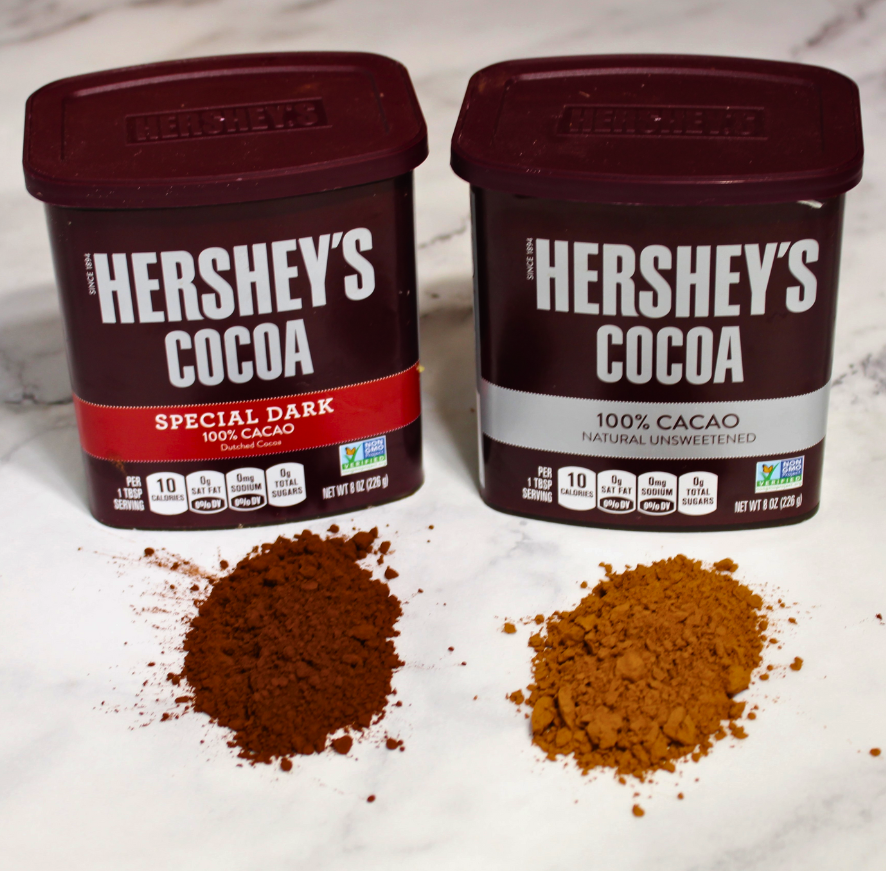
Picture this: you’ve followed a recipe to the letter, but your cake didn’t rise, your cookies taste off, or your brownies don’t have that shiny top. The culprit? It might just be the type of cocoa powder you used.
Introducing the Baking Basics Ingredient Series

Welcome to my series Baking Basics: Ingredient Edition! This series is all about breaking down essential baking ingredients, explaining their differences, and helping you use them correctly for the best results in your baking. Click here to see the other helpful posts in this series.
Baking Cocoa vs. Cocoa Powder: What You Need to Know
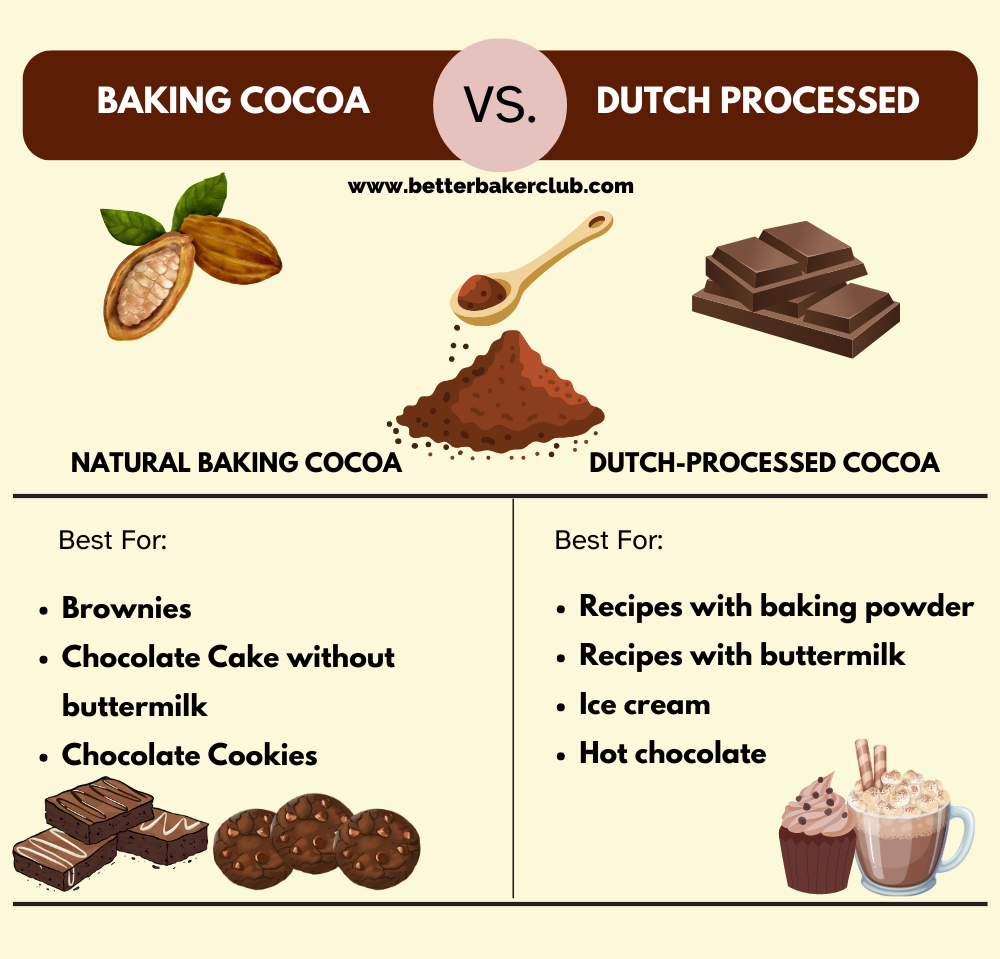
Baking cocoa refers specifically to the ingredient used in baking, which includes both natural and Dutch-processed cocoa powder varieties. Cocoa powder, on the other hand, is a broader term that encompasses all powdered forms of cocoa used in both baking and other culinary applications.
Baking Cocoa: Baking cocoa is your go-to for that rich, chocolatey goodness in baked treats. There are two main types you’ll find in the baking aisle: natural cocoa powder and Dutch-processed cocoa powder.
- Natural Cocoa Powder: This one’s more acidic and gives a sharp, bitter taste. It’s great for recipes that call for baking soda because it helps with the rise. I always use natural cocoa powder in my favorite brownie recipe.
- Dutch-Processed Cocoa Powder: This is treated with an alkaline solution like potassium carbonate, which neutralizes its natural acidity. The result? A smoother, milder flavor and a darker color. I love it in this fudgy chocolate frosting recipe.
Cocoa Powder: The term “cocoa powder” can refer to both natural cocoa powder and Dutch-processed cocoa powder. It’s made by grinding cocoa beans and removing most of the cocoa butter. What’s left is a fine powder that’s packed with chocolate flavor. Cocoa powder can be used in a variety of recipes, from cakes and brownies to hot chocolate.
Making the Most of Baking Cocoa in Your Recipes
Baking Cocoa: Baking cocoa adds flavor and color. For example, when I’m making this easy chocolate frosting, I choose between natural or Dutch-processed cocoa powder based on the flavor profile I’m after. Natural cocoa is great when I want a more robust, tangy chocolate flavor, while Dutch-processed is perfect for a smooth, mellow taste.
Cocoa Powder: Natural cocoa powder works well in recipes requiring baking soda due to its acidity, while Dutch-processed cocoa powder pairs with baking powder or in recipes that don’t need an additional acid.
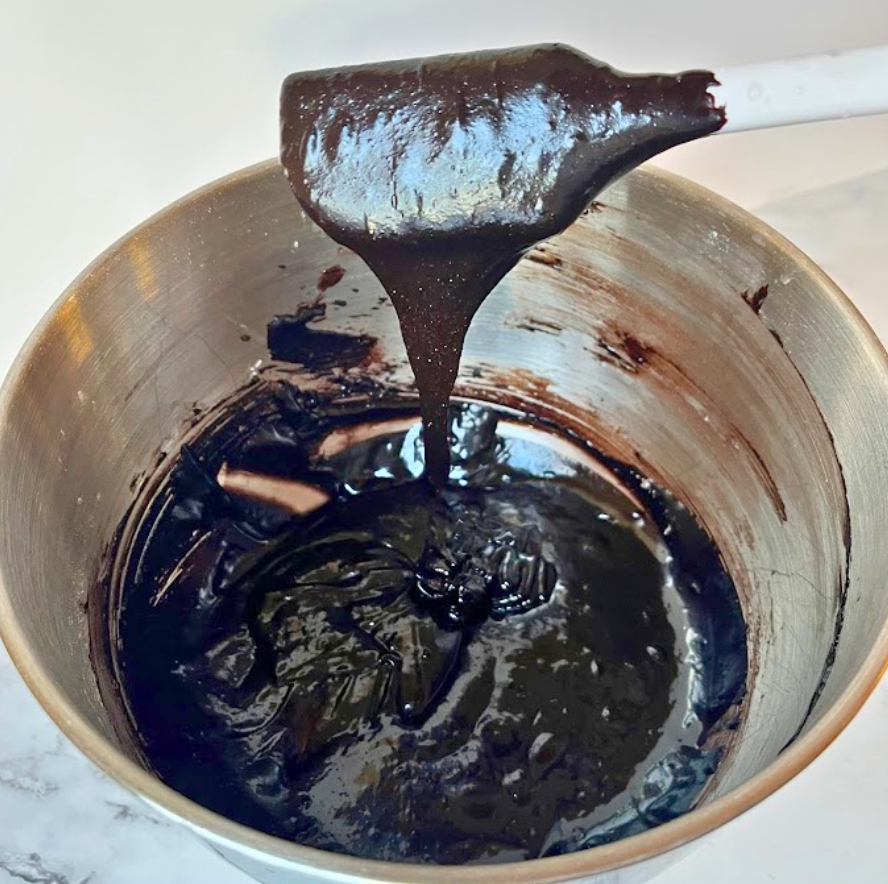
Dutch-Processed Cocoa Powder and Leavening Agents: The Science Behind It
When using Dutch-processed cocoa powder, it’s important to note how it reacts with leavening agents at high temperature. Dutch-process cocoa powder is treated with an alkaline solution, which neutralizes its natural acidity.
This makes it perfect for recipes that use baking powder as the leavening agent. Baking powder already contains acid, so the neutral pH of Dutch-processed cocoa ensures the proper rise and texture in your baked goods, especially at high temperatures. This is why Dutch-process cocoa is often used in recipes like chocolate cake where a smooth, rich flavor and perfect rise are desired.
Can You Substitute? Here’s What You Need to Know
Substitution Tips: One of the most common questions I get is whether you can substitute these ingredients for one another. The short answer? Not really. They serve very different purposes. However, if a recipe calls for natural cocoa powder and you only have Dutch-processed, you might need to adjust the leavening agents to balance the pH.
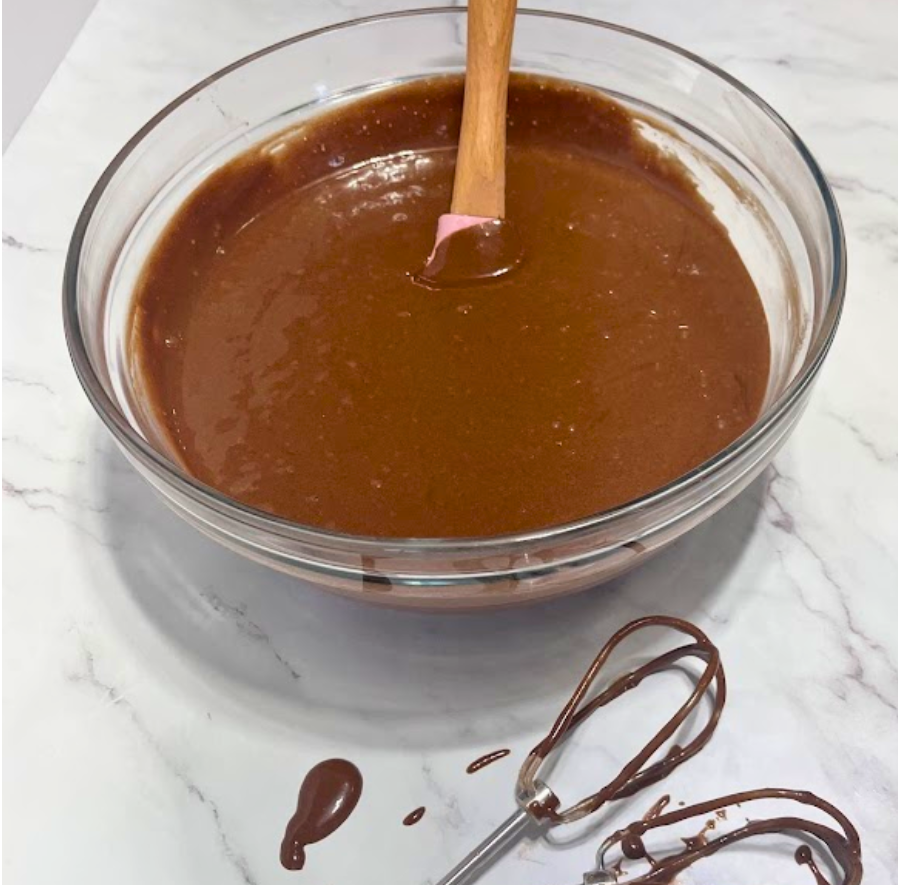
Recipes You’ll Love Using Cocoa Powder
Common Recipes:
- Baking Cocoa: My favorite uses for baking cocoa are in chocolate cake, shiny top brownies, and hot cocoa. Dutch-processed cocoa is amazing in Oreo cookies and chocolate ice cream because of its rich color and smooth flavor.
- Cocoa Powder: Cocoa powder shines in chocolate cakes, shiny top brownies, and hot chocolate. It’s also a key ingredient in many other chocolate-flavored desserts and baked goods.
Recipe Links:
- Shiny Top Brownies (uses cocoa powder)
- Chocolate Cake (uses Dutch-processed cocoa)
- Chocolate Frosting (can use either, but I love it with Hershey’s cocoa powder)
Understanding Chemical Reactions in Baking
Chemical Properties:
- Baking Cocoa: The acidity in natural cocoa powder is what reacts with baking soda to help your baked goods rise. So, when a recipe calls for natural cocoa, don’t swap it with Dutch-processed without some adjustments.
- Cocoa Powder: Cocoa powder’s reaction with other ingredients can vary. Natural cocoa powder reacts with baking soda, while Dutch-processed works with baking powder.
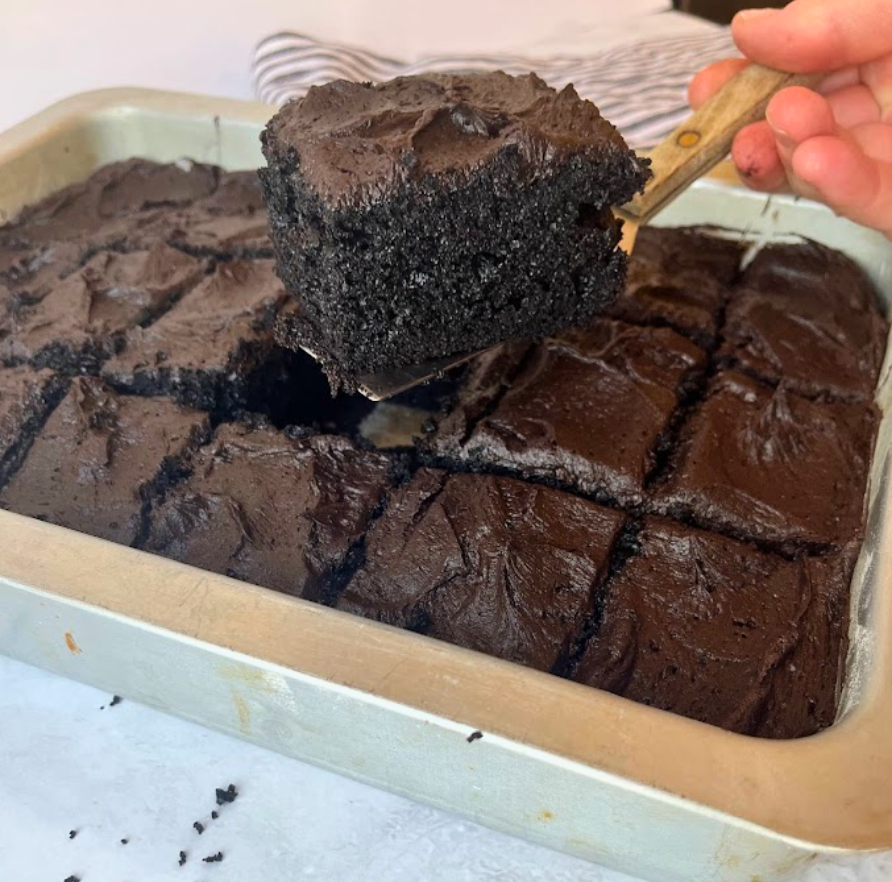
Troubleshooting Common Baking Issues
Common Baking Issues: Here’s where I’ve had some hiccups in my bakery:
- Baking Cocoa: Using the wrong type of cocoa can lead to unexpected results. Natural cocoa gives a more intense, sometimes bitter taste, while Dutch-processed provides a smoother, milder flavor.
- Cocoa Powder: If your baked goods aren’t turning out as expected, double-check which type of cocoa powder the recipe calls for. Using the wrong one can affect the flavor and rise.
Nutritional Information: What You Need to Know
Health and Dietary Considerations:
- Baking Cocoa: Natural cocoa powder is packed with antioxidants and other health benefits. Dutch-processed has slightly fewer due to the alkalizing process, but it’s still a great choice for a rich chocolate flavor.
- Cocoa Powder: It’s generally low in fat and high in flavor. Natural cocoa powder tends to have more health benefits due to its higher antioxidant content.
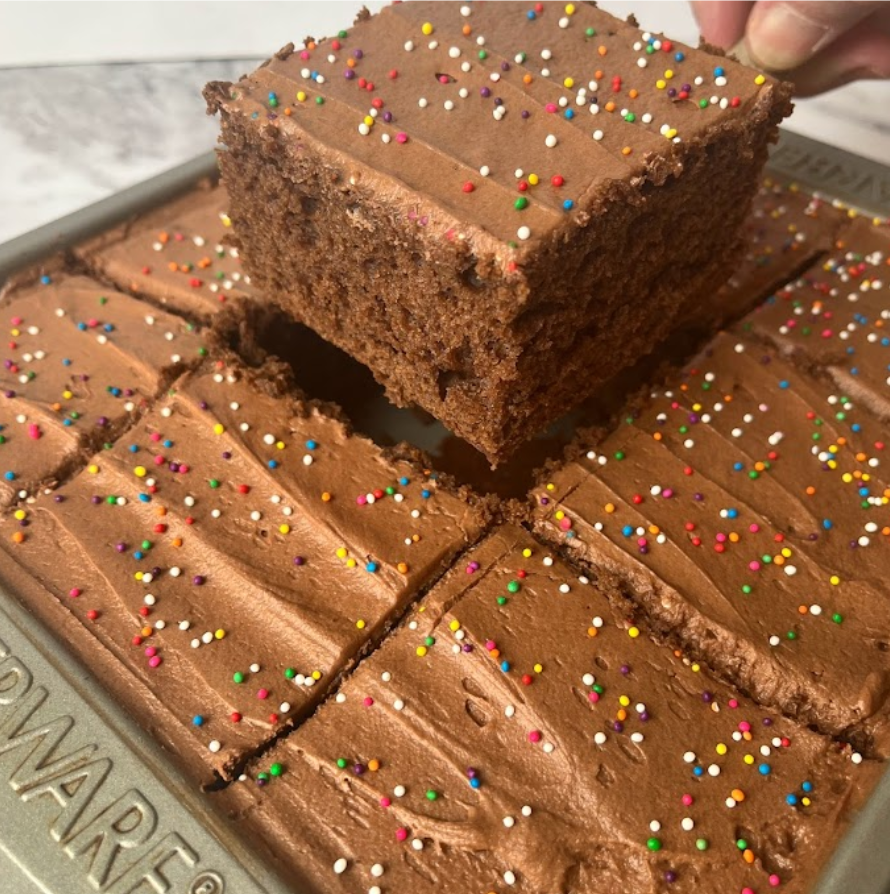
More Cocoa Powder Insights
When searching for the best cocoa powder at the grocery store, you’ll come across various cacao products, each with unique properties and uses. Cacao nibs and cacao pods are raw products from the cacao tree, offering a more natural taste. Raw cacao powder is another option, known for its high nutritional value and intense flavor.
For baking, the pH level of cocoa powder is crucial. Natural unsweetened cocoa powder is acidic and reacts with baking soda, while Dutch-processed cocoa powder, treated with sodium carbonate, has a neutral pH and works well with baking powder.
Different types of cocoa products include cocoa solids, chocolate liquor, and pure cocoa powder. These are derived from fermented cacao beans and vary in fat content and flavor. For example, black cocoa powder and cocoa rouge offer darker color and richer taste, perfect for recipes like red velvet cake.
In terms of versatility, cocoa powder can be used in both low and high-temperature recipes, from ice cream to brownies. Pastry chefs often use specific types for distinct results, whether it’s the deep flavor of Dutch-processed cocoa or the bold taste of natural cocoa.
When exploring different brands and products, look for ones that suit your recipe needs. Whether you’re making American recipes, experimenting with TikTok baking trends, or following classic baking recipes, understanding the properties of each cocoa type will help you achieve the best results.
Wrapping Up
There you have it! A friendly guide to baking cocoa versus cocoa powder. Understanding the differences between these two can transform your baking from good to fabulous. Whether you’re a chocolate lover crafting the perfect chocolate cake or experimenting with new recipes, knowing when and how to use each ingredient is key. Happy baking!
